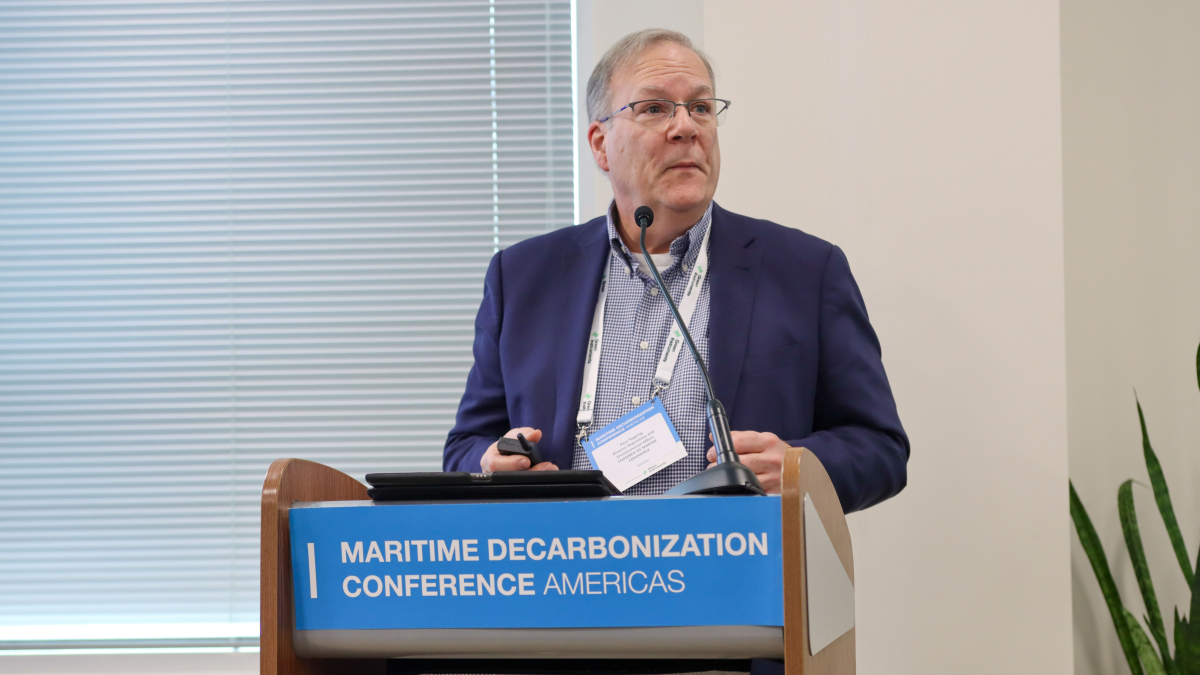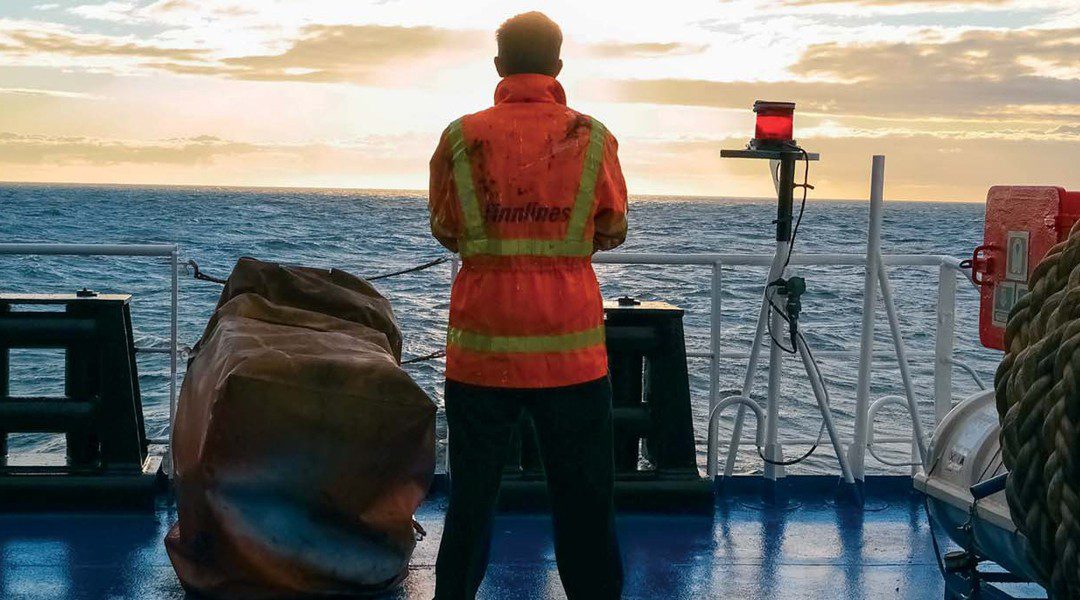 Paul Topping (CMC): “We are victims of our own success” (source: Riviera Maritime Media)
Paul Topping (CMC): “We are victims of our own success” (source: Riviera Maritime Media)
IMO’s calculations do not work for Canadian short-sea shipping, and more work is required to lower the price of biofuels
Can energy efficiency be a disadvantage? “We are victims of our own success,” said Chamber of Marine Commerce director of regulatory and environmental affairs Paul Topping in discussing the fuel efficiency of Canada’s inland and coastal shipping sector.
Citing Canadian government data, Mr Topping told delegates at the Maritime Decarbonization Conference, Americas in December that the Canadian domestic navigation sector uses just a “tiny slice” of the nation’s energy and accounts for only 0.59% of the country’s national CO2emissions. This is despite moving a vast amount of cargo.
The Canadian-flag fleet, on average, can carry one tonne of cargo 360 km on one litre of fuel, according to the Chamber of Marine Commerce (CMC). By contrast, an analysis by the Research and Traffic Group shows that if the same cargo was carried by rail over the same distance, it would produce 31% more greenhouse gas (GHG) emissions. Even worse, in the same scenario, trucking would produce 558% more GHG.
Biofuels are seen as a viable option to lower carbon and GHG emissions because they are a drop-in fuel, requiring little modification to engine technology.
Given their larger energy demands, rail and trucking offer biofuel producers more opportunity than short-sea shipping. This puts shipping at a disadvantage against the land-based transport sectors it competes against. Biofuel used as a marine fuel also requires a special exemption from Transport Canada. “So, when you are trying to look at a long-term relationship and a long-term contract for fuel to secure a better price, and you are limited to three to five years by the date of your exemption, that becomes a problem when the fuel supplier is seeking a 10-year contract,” said Mr Topping.
“Our short-sea shipping trades do not work with the IMO math. Period.”
CMC members encompass the entire logistics chain, from cargo shippers to ports to terminals to shipping to trucking.
CMC members are working on both efficiency and biofuel development and usage. Mr Topping explained that these are the latest generation of biofuels made from agricultural waste. “We are talking about taking something that would ordinarily be treated as a waste product and turning it into a fuel product,” he said.
Getting these new generation of alternative fuels to market will be vital, but at the right price. “We have heard a lot about how we need to increase the price of conventional fuels to attract and support the alternative fuels emerging. But we also want to see how we can reduce the price of these new alternative fuels to make them attractive because, again, our customers have choices,” he emphasised.
IMO’s Carbon Intensity Index (CII) is also problematic for Canadian short-sea shipowners.
“One of the things we are going to see is a ‘made in Canada’ approach for CII using Canadian reference lines. One of the big problems we face is our short-sea shipping trades do not work with the IMO math period. And it is a simple fact that the larger transoceanic ships generate numbers that are equivalent to say, highway mileage, whereas we are doing a lot of stop and go by comparison,” said Mr Topping.
This does not mean that Canadian short-sea shipping operators are looking for a free pass. Far from it.
“Canada has national regulations to set a 40% intensity drop by 2030 that is aligned with IMO, as well as net zero by 2050. We are committed to meeting those targets,” said Mr Topping.





